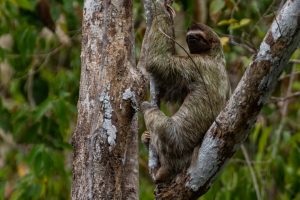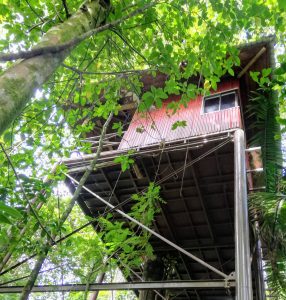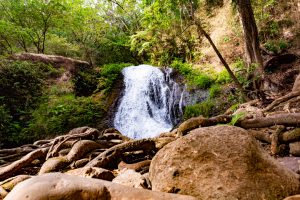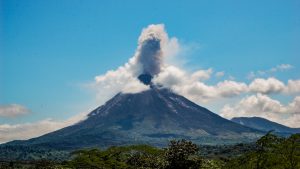One of the amazing animals to spot in Costa Rica is the sloth. Sloths are not an easy to find, as they are great in hiding and chilling high in the trees.

The Sloth Families
Sloths in Costa Rica are represented by two families, Bradypodidae, the family of the Three-toed Sloth, and Choloepodidae, the family of the Two-toed Sloth.
Both species of sloths, the two-toed and three-toed are known for their slow movements, and “chilling” on the trees. They move slowly due to their very slow metabolism and have a very low-energy diet.
A diet difference between the two species is that the two-toed is omnivorous, feeds from almost anything, such as fruits, leaves, insects, and small reptiles, meanwhile, the three-toed is herbivores, and feed exclusively on the leaves of few trees.
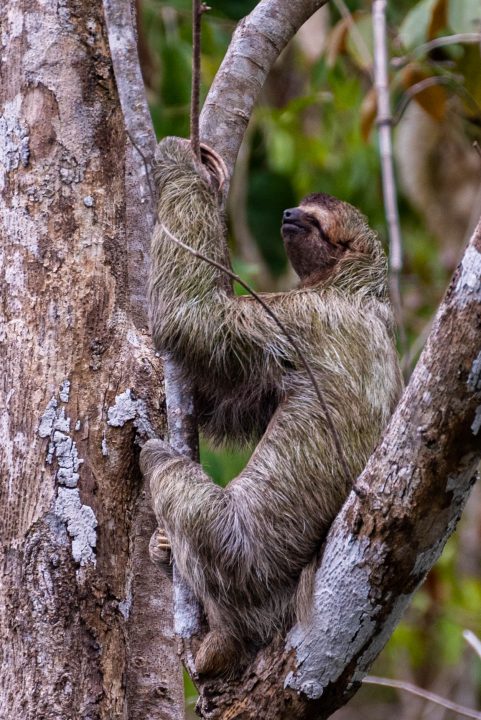
Three-toed Sloth
The Three-toed Sloth is the most common of both sloths in Costa Rica. It is one of the most distinctive and abundant rainforest mammals.
Each foreleg has three long, curved claws that help grasp branches as it climbs. It has coarse pale brown to grayish hair that often has a greenish tinge caused by algae.
The face is white with a dark stripe extending into each eye. There is often a light patch on the throat and chest.
In a way, sloths are ‘cold-blooded’. Their body temperature drops as much as twelve degrees at night to conserve energy. Each morning they climb to the treetops to warm up in the sun.
Three-toed Sloths are most abundant in the Caribbean lowlands, especially in Cahuita and the nearby Cahuita vicinity. They can be seen along the Tortuguero canals just east of Guapiles, and along the main highway from Guapiles to Limon; in the Central Park of Limon, and along the highway from Limon to Cahuita. They are also found at La Selva Biological field station and on the Pacific slope near Quepos, Manuel Antonio, Corcovado.
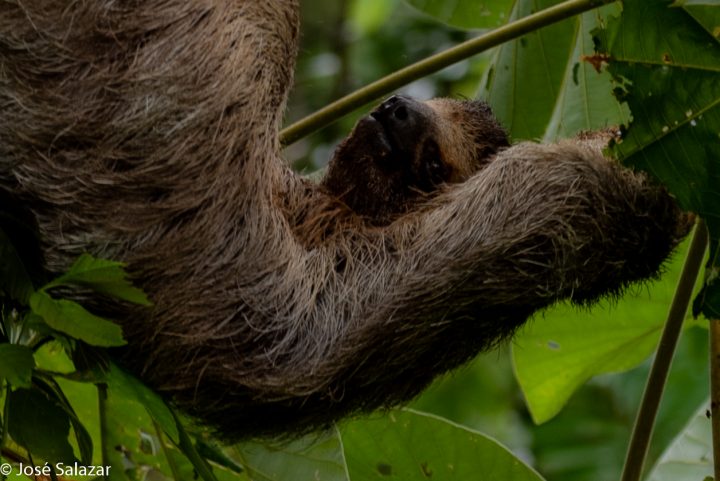
Each sloth eats leaves from a unique combination of about forty tree species. Bacteria in the sloth’s stomach are adapted to digesting those leaves, much like bacteria digest grass in the stomach of a cow. The combination of tree species needed is different for each sloth, so they can live at a higher density than if they all depended on the same plants. Densities may be as great as three sloths per acre but are usually about one per acre.
A sloth reaches sexual maturity at three years of age and may live twenty to thirty years. An infant clings to the month for its first six months of life. During that time the young learn which leaves to eat from the female. The mother chews the leaves and passes them to the young so that the bacteria necessary for digestion are transferred to the young. Then the female leaves the young sloth alone in her territory for six months so it can learn to survive on its own. When the young sloth reaches one yes of age, the female returns and forces the young to find its own territory.
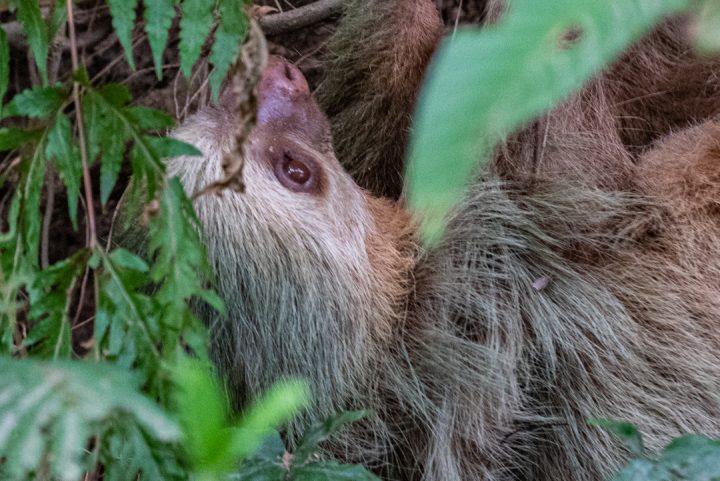
Two-toed Sloth
The Two-toed Sloth is distinguished from the Three-toed Sloth by its long yellowish-brown to gray fur that drives the appearance of a ‘cheap-faced blond wig’.
The short, somewhat piglike snout is also different from the less pronounced nose of the Three-toed Sloth.
Each foreleg has two long, curved claws. The Three-toed sloth is found only in the lowlands, but this sloth is also found up to middle elevations and cloud forest.
Two-toed Sloths are more nocturnal and include more fruit in their diet than Three-toed Sloths.
They can be very difficult to see when curled up asleep in the treetops. They occur at a lower density than Three-toed Sloths – about one animal per five or seven acres.
Both sloths together account for about 70% of the combined weight of all rainforest mammals.
Their densities greatly exceed those of monkeys. In one square mile of forest, there might be over 1,900 sloths and 190 howler monkeys. However, howler monkeys are more conspicuous because they are noisy and active.
The best place to see Two-toed Sloths is in Central Park at Limon. There has been a population of sloths in this urban park for at least thirty years.
This sloth can also be observed in trees along the highway from Limón southward to Puerto Viejo, in Cahuita, and along the Tortuguero canals.
They occur in the moist and wet forest of the Osa Peninsula, including Corcovado. Sometimes they can be spotted in the middle-elevation cloud forests of Monteverde Cloud Forest Reserve, in the central city park in Orotina, and in the Turrialba region.
If you are interested in seeing Sloths in Costa Rica, we at Caracara Travel will advise you on where and when to go, and how to find them easier. Contact us and let’s plan your Costa Rica Experience!

